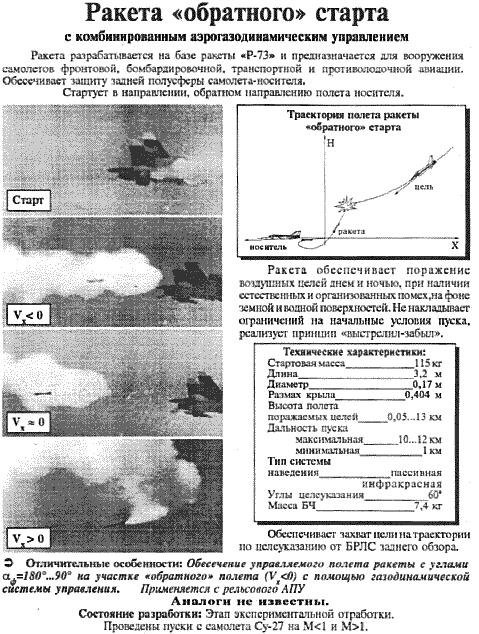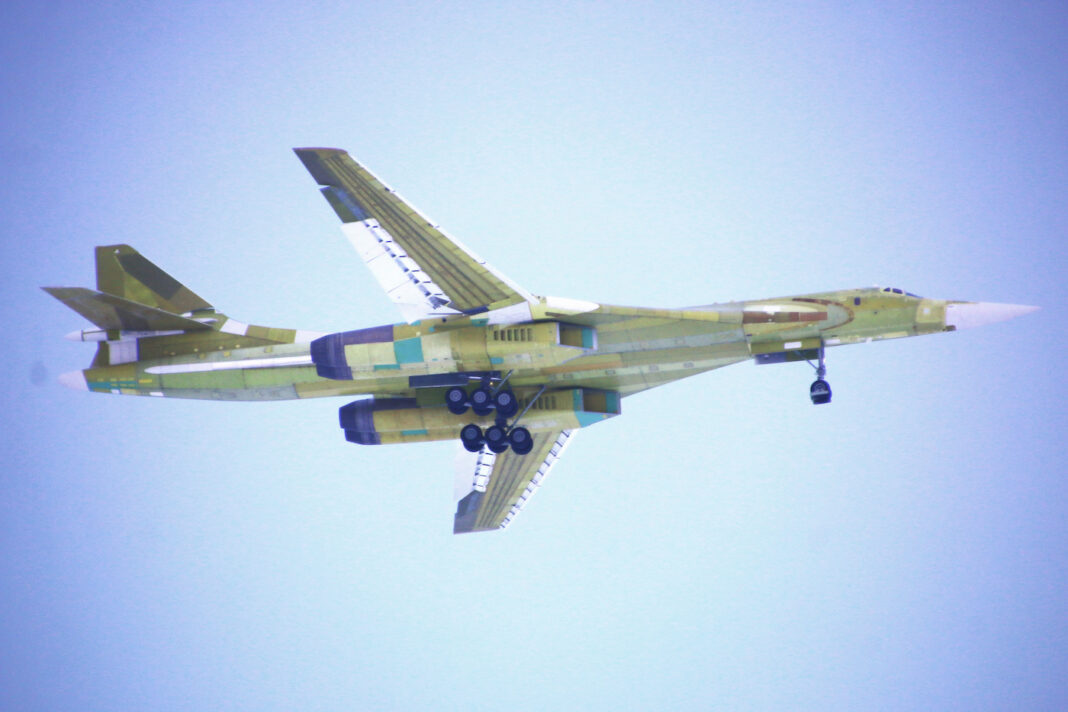Russia’s newly built Tupolev Tu-160M supersonic bomber will have the ability to detect enemy aircraft and missiles in its rear hemisphere, and defend against them using its own air-to-air missiles.
According to RIA Novosti news agency, the new White Swan will be the first aircraft in the world to incorporate this capability. The Tu-160M will be able to detect and intercept enemy aircraft through the use of reverse-launch missiles.

According to industry sources consulted by RIA Novosti, «on the first newly manufactured Tu-160M, a rear-view radar station was installed, which will allow the aircraft to use so-called reverse launch missiles for self-defense against air-to-air, surface-to-air missiles and fighters.»
The Tu-160M bomber’s tail radar will detect approaching threats from the rear hemisphere, whether anti-aircraft missiles or approaching fighters, and shoot them down using air-to-air missiles of its own.
The source added that «the use of rear-view radar on heavy bombers is more appropriate, as these are low maneuverability vehicles that simply may not have time to turn their nose toward the enemy.»
The concept is not new. Since the 1970s there have been many studies conducted in both the Eastern and Western powers for active defensive armament for bombers based on guided missiles. But the vast majority of these systems never went beyond the concept stage, preferring to go for speed, stealth, electronic warfare, or a combination of these.
The interlocutor also clarified that reverse-launch missiles can hit targets in the forward hemisphere. When attacking targets in the rear hemisphere, according to the tail radar target designation, the missiles turn 180 degrees in flight.
This mode was demonstrated by France, through a test in which a Dassault Rafale fighter fired a Mica missile at a target directly behind it. The target data had been passed by another aircraft via data link and the Mica missile, immediately after launch, made a 180° turn and after a few seconds, neutralized the target.
Russia, on the other hand, had developed a special version of its Vympel R-73 short-range air-to-air missile modified for backward launch. The goal was to develop a defensive weapon that could be carried by bombers, transport/cargo aircraft and maritime patrol aircraft for self-protection.

Unlike the system proposed for the Tu-160M, this «special» R-73 was launched in the direction opposite to the direction of flight of the carrier aircraft, and being infrared-guided, it was a «fire-and-forget» type weapon.
The difference between a forward-launched system, which then rotates «over the shoulder» and one that launches facing backward, may be in the conservation of energy of each method.
The forward-launched missile conserves much of the energy and velocity of the carrier craft and then, through its own propulsion, accelerates and performs the 180° turn maneuver (most likely about the vertical axis) which would allow it to conserve quite a bit of the energy with which it was launched.
On the other hand, a rear-facing launch missile must first counteract the inertia of the moment of launch, reach a sort of «braking» and then begin to accelerate in the opposite direction.
The advantage of a forward-launched missile, the option chosen for the Tu-160M, is that it could cover threats at 360°, not just those approaching from the rear hemisphere. If the new weapon system proves successful, it is likely to be implemented on a wide variety of warplanes, not only on large bombers, but transport, intelligence, and even fighter aircraft. These could dispense with rear radar (except for the Su-57, which has 360° radar coverage) to find and target missiles, but could make use of data links and network warfare to achieve «shoot-back» capability, as demonstrated by the French Rafale.







